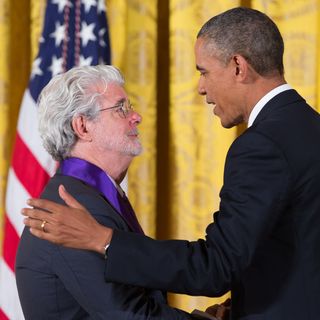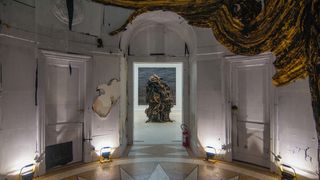After months of speculation, and an unprecedentedly long delay, the US Department of State’s Bureau of Educational and Cultural Affairs has selected a US representative for the 2019 Venice Biennale. The delays worried many observers, with some even predicting that the United States might be one of the only nations not represented at the world’s most prestigious contemporary art fair. For many art critics, the long interpretive text tem from Trump’s well-documented hostility toward the arts (including, not least, the fact that he still hasn’t awarded any National Arts Medals), with some suggesting that his administration’s failure to nominate a US representative revealed “a country contented with seclusion”.
The delays seemingly had more to do with widespread administrative holdups than anything else, though as with many other anomalies and broken protocols, it’s tempting to over-read such moments as being reflective of political ideology. In any case, the State Department recently announced that the Washington sculptor Martin Puryear will represent the United States at next year’s festival. It’s a bold and unexpected choice, and one worthy of analysis and reflection.
Explainer: What happened to the presidential arts medals?

It’s important to note first of all how important the Venice Biennale is to global art. As the world’s longest-running and most prestigious venue for contemporary art, the Biennale celebrates visual creativity of all kinds by hosting representatives from across the globe, many of which are given separate “pavilions” in the city. The United States Pavilion is one of only 30 permanent ones, having been constructed in 1930 with funding from an American artists’ cooperative. Its broad purpose, as explained in an early catalogue, is to provide: “a broader field [for] American art; to exhibit in a larger way to a more numerous audience, […] thus displaying to the world the inherent value which our art undoubtedly possesses.” The pavilion is thus one important way in which US art addresses itself to the world, and it has always worked as a showcase for the best American artistic talent.
At 77 years of age, Puryear is a veteran of the American art scene. He has received countless laurels for his sculptures and installations, including a MacArthur “Genius” award, a National Medal of Arts (awarded by President Obama in 2011), and a Gold Medal in Sculpture from the National Academy of Arts. His work has been featured in many of the most prestigious US galleries, and is widely exhibited internationally.
Puryear is also the second African-American artist to be featured in the US Pavilion, and his sculptures have often wrestled with the complexities of racial politics in contemporary America. His well-known 1996 piece Ladder for Booker T. Washington, for instance, depicts an endlessly receding handcrafted ladder ― a complex reflection on the perhaps illusory politics of respectability espoused by Washington. Likewise, Shackled (2014), evokes the heinous practices of slavery, with its disorienting pairing of the black iron recreation of the cuffs used on slave ships as part of a minimalist, mammal-like sculpture. Indeed, one influential art critic describes Puryear as having “a decades-long body of work that is an effective foil to the Trumpian zeitgeist,” with its subtle and thoughtful aesthetic engagement with key social and political questions.
Puryear will receive a quarter of a million dollars in State Department funding for his efforts, but is seemingly unlikely to have any qualms about making art in opposition to those who fund it.
One thing that makes Puryear an intriguing choice for the Biennale is that he has been unafraid to make art that is unflattering to those who commission it. In 2014, he constructed an oversized ball-and-chain sculpture for Brown University, in response to a request for a piece of public art to be displayed on university grounds. His confronting piece evokes the ongoing legacy of slavery, and Puryear’s accompanying interpretive text makes it clear that the university itself was a “beneficiary” of the African slave trade. Puryear’s Slavery Memorial both confronts passersby with the dark history of American slavery, while also attempting to hold Brown University to account for its participation in this same history.
Will he perhaps produce art that explicitly or otherwise criticises his artistic patrons in his Biennale display? Puryear will receive a quarter of a million dollars in State Department funding for his efforts, but is seemingly unlikely to have any qualms about making art in opposition to those who fund it. Indeed, plenty of American representatives in previous years have bitten the hand that feeds, as it were, by producing pieces critical of the administrations who have paid for and commissioned their work.
It may seem like a long way off, but be sure to keep an eye out for Puryear’s contribution to next year’s Biennale, which runs from May to November 2019. Whatever he chooses to display, and however political or otherwise his sculptures end up being, it will definitely be worthy of attention, and may well cause serious discomfort for the administration who put them there.






